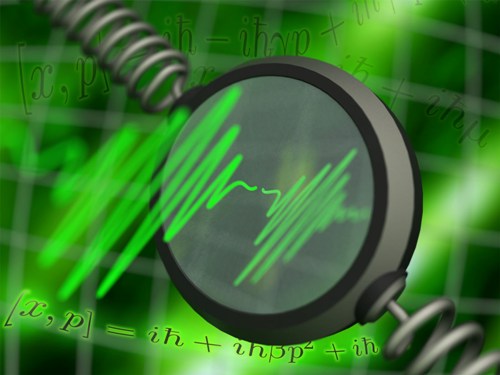An international partnership between the teams of Myungshik Kim at Imperial College London and Markus Aspelmeyer and Caslav Brukner at the University of Vienna has put forward a novel quantum experiment utilizing Planck-mass mirrors, paving the way to study some predictions of quantum gravity proposals in a lab.
 Illustration of a laser pulse used to probe a mirror for possible quantum gravitational effects (Credit: Jonas Schmöle, VCQ, University of Vienna).
Illustration of a laser pulse used to probe a mirror for possible quantum gravitational effects (Credit: Jonas Schmöle, VCQ, University of Vienna).
Quantum mechanics explains effects on the scale of single atoms, particles and molecules. In quantum mechanics, it is not possible to measure the position and speed of a particle simultaneously. However, it is possible to measure the position and momentum of a particle as two subsequent measurements. The order of the measurement of the particle’s position and momentum is interchangeable.
Results vary for the two different measurement sequences in quantum physics. According to several quantum gravity theories, this variation may be changed based on the system’s mass because the measurements of distances are bound to the Planck-length. The researchers have now demonstrated that very massive quantum systems can be used to verify these ultra-small modifications in the laboratory.
The major idea is to accurately study the difference between the two measurement sequences by interacting a laser pulse four folds with a moving mirror. By accurately carrying out the interactions, the researchers have demonstrated the possibility of mapping the impact onto the laser pulse and measuring it with quantum optical methods.
Igor Pikovski, one of the researchers, informed that any difference from the anticipated quantum mechanical outcome will be very interesting. Even though no difference is noticed, the outcomes will be helpful in exploring new theories. The researchers demonstrated the way to study these yet-to-be-explored theories in a lab without depending on unusual astrophysical events or high-energy particle accelerators.
The study results will be reported in Nature Physics this week.